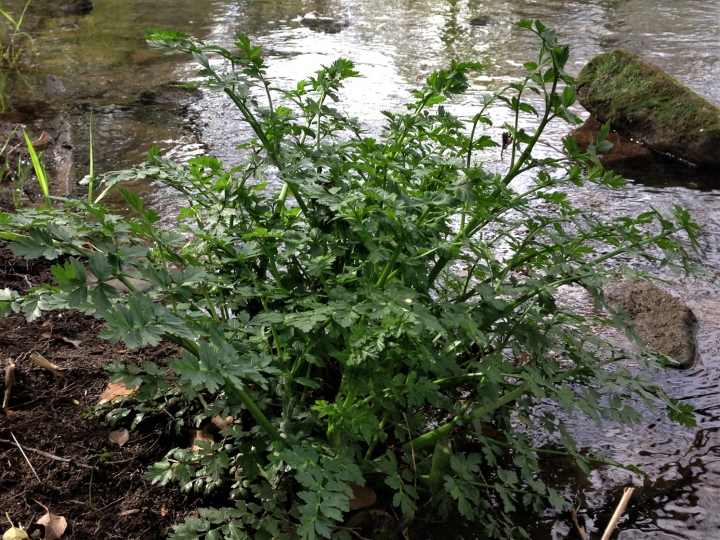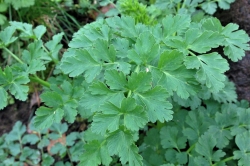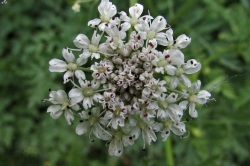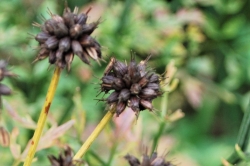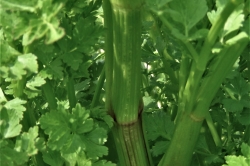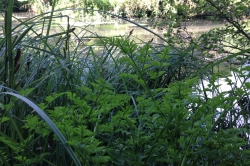The most poisonous plant in the UK and very common along most of our waterways.
Home / Hedgerow Guide /
Hemlock Water Dropwort
Hemlock Water Dropwort
| Hedgerow Type | |
| Common Names |
Water Hemlock, Dead Mans Fingers, Dead Tongue |
| Scientific Name |
Oenanthe crocata |
| Season Start |
Feb |
| Season End |
Jul |
Please note that each and every hedgerow item you come across may vary in appearance to these photos.
Leaves
Bright green and shiney, a bit fern like with two to four pinnate divisions, the whole looking triangular in shape.
Stem
Bright green, hollow, grooved, hairless, shiney and up to six feet tall. When cut the stem exudes a staining yellow liquid.
Habitat
Damp areas including marshes, lake, river and stream sides or along ditches. Can be found several meters inland from water sources.
Possible Confusion
Flat leaved parsley, water parsnip or water celery.
Smell
Like very sweet parsley, its lovely smell gives no indication off how toxic this plant really is.
Taste
The root is said to taste pleasantly like parsnip before poisoning the consumer.
Frequency
Very common along waterways, damp ditches and marshy areas.
Medicinal Uses
Being the most poisonous plant in the UK, this is not used for medicinal purposes.
Other Facts
The term sardonic grin comes from the grisley practice in Phoenician Sardinia of disposing of criminals and old people using Hemlock Water Dropwort. The poison acts by constricting the muscles causing death by asphixia which also causes a rictus like death grin, the sardonic grin.
Hemlock Water Dropwort is the most poisonous plant in the UK and all parts of it are poisonous, it is reported that death can occur in as little as a couple of hours after ingestion.
Hemlock Water Dropwort is in the Apiaceae family, one of great interest to foragers as the family contains many fine edibles and a good handful of deadly poisonous species.

